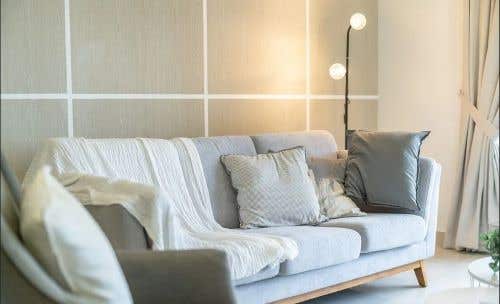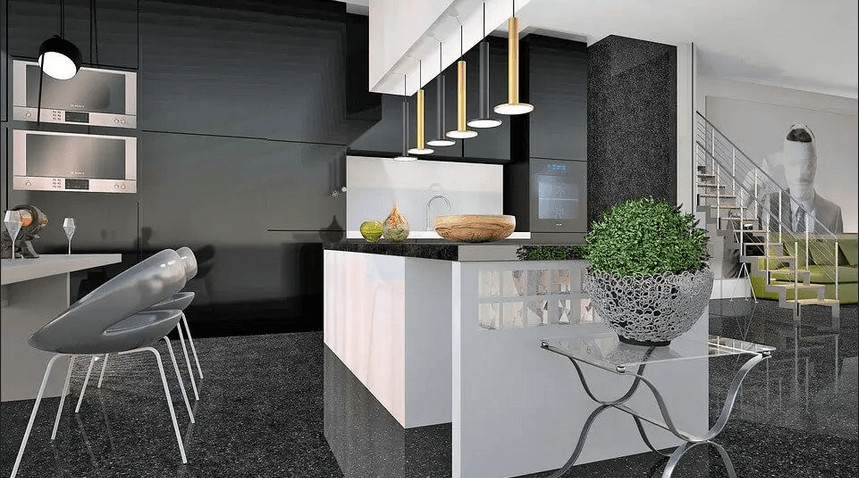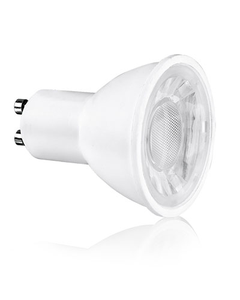Warm White vs Cool White: Which Should You Choose?
Warm White or Cool White?
Are you confused when you see Warm White or Cool White on an LED light? Maybe you’re doing up your house and are wondering whether Warm White or Cool White is better in your kitchen?
Perhaps you’re unsure of which colour temperature is best for a relaxing bedroom? Well fear not, here at Electrical2Go, we’re the experts in home lighting so we’ve compiled this handy guide to colour temperature and which is most suitable for your project; find out which is better today Cool White vs Warm White!
What is LED Colour Temperature?
Other than energy efficiency and durability, one of the biggest differences between LED bulbs and traditional products such as halogen or incandescent bulbs, or fluorescent tubes is that they come in a much wider range of colour temperatures.
Colour temperature is measured on the Kelvin scale (K) and ranges from 1000K up to 10,000K. The vast majority of home lighting sits between 2000K and 6500K, but what does that mean for your choice of light? With so many colours to choose from, and each offering a different type of atmosphere it can be difficult to make a decision for your home project. To help you understand, we’ve put together this handy table
Mobile users turn horizontal
Kelvins (K) |
Light Type |
Appearance |
Characteristics |
Perfect Place |
2000K - 3000K |
Warm White |
Orange to Yellow
|
Calming, Atmospheric, |
|
3000K - 4500K |
Cool White |
Bright White |
Bright, Vibrant, Crisp, Inviting |
|
4500K - 6500K |
Daylight |
Brightest White |
Illuminating, Powerful, Alert, Appears as Day Time |
|
What is the Difference Between Warm White and Cool White
By far the two most popular types of LED light bulbs, the main difference between Warm White and Cool White light bulbs is the colour they emit. As we’ve seen above, Warm White is (no surprises) warmer and comparatively dimmer than Cool White which is brighter and has more of a blue tinge. In some cases, some people may opt for a different colour temperature to what's considered popular. For example, where kitchens are usually luminated with Cool White downlights you will also find other kitchens using Warm White light fittings to create a more cosy feel for friends and family to hang out. It is all about the vibe you want to create - and we offer many kinds here at Electrical2Go!


Warm White Lighting
Warm White lighting is one of the most popular around the home, especially in living areas or where you want to create a homely, inviting and relaxing atmosphere. Warm White lights have an orangey-yellow tinge to them which is similar to the older style incandescent or halogen bulbs.
The best place to use Warm White bulbs is anywhere you spend a lot of time relaxing and unwinding around the home such as bedrooms, living rooms, dining rooms, conservatories and even in the garden as summer lights. Warm white lightbulbs are also great in table lamps and bedside lamps.
Here, you can see what a Warm White light could look like in your home!
Cool White Lighting
At the other end of the scale, cool white lighting emits a brighter, more vibrant light that’s more toward the blue end of the colour spectrum. They appear closer to Daylight than a Warm White bulb. They’re best suited for the busier and more lively areas of the home where you need something a bit brighter. They’re very popular in kitchens, utility rooms, bathrooms, offices and other work environments. Cool White light bulbs are much closer to the older style fluorescent tube lights. Cool White lighting is often commonly used in commercial properties.
Here, you can see what a Cool White light could look like in your home!




Daylight Lighting
At the brightest end of the scale, Daylight lighting does exactly what it says on the tin... it replicates daylight.
These types of lights are very bright and powerful so are often used in commercial settings such as yards, forecourts, sports venues, and as floodlights and security lights. In a home setting, people often use them as driveway or garden lights.
If you're looking for a temperature that will help accentuate certain features of your home, opt for a Cool White light rather than Daylight so it is not as piercing to the eyes.
Here, you can see what a set of Daylight lights could look like!
Visual Difference Between Colour Temperatures
Check out this visual representation of different colours and their Kelvins. Ranging from 1000, Warm White, to mid-range Cool Whites and Daylight up to 10000 (pure blue).
Here you can see that lower end of the spectrum offers light that is more relaxing and can be used for situations such as reading rooms, bedside lamps or general living spaces.
On the other end, you can see the blue tinge and brighter colour temperatures better used for places that require alertness and higher visibility. Use this image as a helpful guide to picking your perfect colour temperature!


Get a calm, relaxing and welcoming vibe to the exterior of your home with some outdoor Warm White light fittings.
Give yourself peace of mind, and increase home security with Cool White Floodlights to increase visibility to the exterior of your home.
When Cool White 4000K or 5000K lights aren't enough, spruce up your home project with some bright LED Daylight lights.
Colour Temperature FAQs
Should I choose Warm White or Cool White for my kitchen?
It depends. For the main lights, cool white is one of the most popular choices. However, if you’re opting for a country or traditional style, then you may find that Warm White lights work better. Many people often choose Warm White lights for their under cabinet lights, and this can work well in conjunction with the brighter ceiling light.
Should I choose Warm White or Cool White for my bathroom?
Bathrooms generally benefit from the brighter light so you can see more clearly. However, if you love nothing more than a relaxing soak, consider Warm White led lights for that softer atmosphere.
Is 2700K Warm White?
Yes, Warm White colour temperature is considered to be between 2000K and 3000K. This temperature is usually found in relaxing spaces such as livings rooms and bedrooms to help wind-down.
What colour temperature is Cool White?
Cool White colour temperature is between 3000K and 4500K. Often found in places where focus is required, such as work places, commercial areas; at home this colour temperature is perfect for kitchens and rooms where people tend to gather.
What colour temperature is Daylight?
Daylight can range from 4500K to 6500K in colour temperature, providing very bright light that replicates daylight levels of light. For an easy to see guide, check out our white colour temperature chart on this page!
Is Cool White the same as Daylight?
No, Daylight is generally brighter than Cool White. However, at the brightest end of the Cool White colour temperature range, it will still be very bright. If you were to go beyond Daylight you will start to find Blue Light colour temperatures bringing a cool, clean feel.
Which is better, Warm White or Cool White for colour temperature of light?
Neither is better or worse, but each has its own merits depending on where you plan to use it. Generally, you will use Warm White in toned down areas where relaxation is important and with Cool White it is best used in spaces where attention and liveliness is wanted.
Which colour temperature is best for eyes?
The best colour temperature for human eyes will depend on where and what you are doing. For example, if you're getting ready for a slumber and like to enjoy reading beforehand, you'll benefit from a Warmer White as it will allow your eyes to relax before getting a full nights rest. We often get advice to avoid Blue Light before sleep, so by using the warmer end of the colour temperature spectrum, you can enjoy a better sleep.
If you're needing a light temperature that will help you focus on a task, or to keep energy levels up through a work day, then using a Cool White light from 3000K upwards can give a more awakened state compared to what Warm White can provide. This is popular to use for retail, industrial and office areas for work. Explore this page to read more about when to use certain kinds of colour temperatures.
Other Guides: Want to learn more about the world of electrical products? Read through our other guides below...
• How to choose the right light bulb?
• What do IP Ratings mean?
• How much can I save with LED lights?
• What consumer unit do I need?
If you’re unsure about the best lighting for your project, don’t hesitate to get in touch with our friendly team. We’ll be happy to talk you through your options and ensure you get the lighting that works for you. Just dial 01424 220384 or contact us via email.










